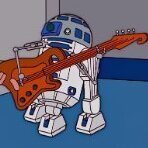All Activity
- Past hour
-

Cultural appropriation and covers
Leonard Smalls replied to DF Shortscale's topic in General Discussion
The problem with Mike Read is he's a massive tool... -
neepheid started following I met Becky Baldwin!
-
Geez, don't give Moog any ideas...
-
Westone "The Rail" Bass - DOA - Now a minimal bass
rwillett replied to rwillett's topic in Bass Guitars
Very good -
Lozz196 started following Finding your sound
-
I know how I want to sound for each of my bands, although all slightly different invariably it`s a permutation of scooping mids and adding highs so nothing drastic. What I have found is that when I get an onstage sound I like with an unfamiliar amp I then back off the bass/lows a notch on the dial, it might not make the onstage sound as pleasing but I find it then fits in the mix better.
-
-
- 8
-

-
Mike Read isn't though. Warning - do not play, political content.
-

Cultural appropriation and covers
DF Shortscale replied to DF Shortscale's topic in General Discussion
I feel like genres like ska and even jazz are much less problematic. (I personally find reggae a little more tricky but it depends on context). -
Genuinely fascinating! Wonder what they chat about?
-
Greco 4001/4003 types ran from the early 70s through into the 90s/00s, so it depends! At the point in the 70s where the Chushin Fakers were available, Greco's versions were Fujigen Gakki's 2388B & 2388B/DX models, the DX being through-neck & the most comparable. I don't think there's much in it - all of the Japanese factories active in this era were capable of extremely high quality & any through-neck MIJ Rick copy is a high-end instrument within its range. I own a Chushin Faker and it's a solid, well-made & very playable bass - however I've never owned a Fujigen-made one so I can't make a direct comparison.
-
Those heavy old things? GR Bass AT212, 11.5kg.
-
I'd suggest a bipolar electrolytic capacitor, 100uF, between the volume control wiper (centre terminal) and the jack socket. https://www.ebay.co.uk/itm/135605376775?_trksid=p2332490.c101875.m1851&itmprp=cksum%3A135605376775cef0a91da54e454782348804eec8ffed|enc%3AAQAKAAABAGqm9FAFUYsD%2Bg2P7amRF5PbrMKBN936TfFmdyEufDvNNKlouoyOXUVGTPycutqBFaPaOz%2BQqnhN8qhZ%2BG5l%2BL7DDJt8BGa%2FL%2FwS2wEfKZPNxF6YW3%2BOx%2F7ihlnjbvlvBdhOpkkf4UKXyGM%2BbVkoLJB52mgrxZb48efu8b%2FhufVM8MgbVsMtNLBULIZNQOKjZc5QWzm1qqCJ6%2FxIL4Bf7IPNWqZCHUiTIXx8mqkMApNuDghAJGD4Cl0x4rpQFzfYOmJWkS7uv9s19vuRnPSWKX6%2F7kol5CacR7y0rSDod%2F1DYURL1WsxQVrGELLor6eq4lvgL5Ifzlg%2Bthp6HhqDbZA%3D|ampid%3APL_CLK|clp%3A2332490&itmmeta=01K5V1RHF038YS2JAVXMHRP6AW&var=434962815180 - the 100uF and axial (one lead each end) would probably be easier to fit than radial (both leads at one end). Depends how urgent this is. If you've got a little time, it's going to be worth getting the sticky foam off the component side of the preamp circuit board. There's going to be a capacitor connected to the orange wire just by the red wire in the upper connection block on that diagram, and that's most likely the guilty party. It may well be a case of replacing the entire board though. I think there's another work round, which is to briefly switch to passive when switching a pedal, although that's not ideal either.
-
Those are for speaker crossovers, so no they're not the right ones. If you rip off the charcoal padding on the blue PCB in the circuit diagram you should see a physically much smaller capacitor, and with luck there will be the rated capacitance written on it. On the circuit diagram above, it is not shown, but would be on the blue thing in the centre, on the other side of the board.
-
Mooovin' and Groovin' - Redds and the Boys
-
I've completely given up trying to get synth/filter sounds out of the bass. Even if I had devices capable of the sounds the extra amount of practice I'd need to put in in order to trigger them reliably in a repeatable fashion simply isn't worth it, when I can either play it myself on a keyboard where it will sound right every time, or hand it off to our synth player or to the backing track, who can play it even better than I can. I'm lucky in that I now play Bass VI, so if I really want a synth sounding bass I can give it to an instrument better suited to it, and play something in the guitar register instead. If I was in a band with a more traditional line-up I'd probably bring a keyboard synth for any songs that absolutely had to have synth bass parts. IMO getting the sounds right for a song is as important at rehearsal as finding the right notes to play. My band spend at least as much time in the practice room fine tuning our synth and effects sounds and the balance between the different ones we use as we do working out what to play on a song. Both are equally important, and it is essential that the sound changes are right and properly balanced and the rest of the band need to appreciate that. I find that I can get close to the right sounds on my own at home, but I know that everything will need adjusting once the rest of the band is playing and we factor that in when getting a new song ready for performing to an audience.
-
I would. But then, I'm subject to occasional rash & impulsive decisions!
-

Westone "The Rail" Bass - DOA - Now a minimal bass
prowla replied to rwillett's topic in Bass Guitars
That one is off the rails! -
HempElf joined the community
-
Muzz started following Squier Classic Vibe Precision Bass 2008 Sonic Blue
-

Squier Classic Vibe Precision Bass 2008 Sonic Blue
Muzz replied to theplumber's topic in Basses For Sale
-
Black is the best colour IMO. Goes with the headstock well, and easily made a bit stealth with the addition of a black guard once the original has been binned. IIRC the colours available were teal, black, white and a kind of burgundy red, all textured.
-
daveybass started following Squier Classic Vibe Precision Bass 2008 Sonic Blue
-
soulstar89 started following Solidgold FX Beta DLX
-
pantherairsoft started following Ampeg B100r - Rocket bass 1x15" combo
-

Ampeg B100r - Rocket bass 1x15" combo
pantherairsoft replied to NoirBass's topic in Amps and Cabs For Sale
I absolutely love these. Used one as my main rig for years some 20 years ago. No wheels on mine though, which I regretted. I played main stage at Nottingham Rock City using this and recall the Soundman saying, "Mate, this isn't going to even be enough for onstage monitoring in here", as he placed it next to an Ampeg 810 that the headliners were using. He cranked the volume up to about 75%, returned to his desk, then 30 seconds into the soundcheck he stopped us and said, "Fair play - any chance you can turn the bass down on stage." Absolute little monsters. - Today
-
Yeah, I think you are probably right. The main issue I have with programmable presets is I tend to completely leave them alone when playing live or even when rehearsing - as having 7 other people in the band stand around while I kneel down and click through menus to try and adjust parameters and hit save etc. seems risky or at least just a bit of a faff. But that is something I could get more confident with if I actually edited the presets more in a band setting. Also, I find multi-fx are still a bit lacking with stuff like synth and envelope filters - once I add them, I need a power brick, and a pedalboard, and the multi-fx to change EQ presets, it all seems to get a bit big and complicated and looses a bit of the spontaneity individual pedals on or adjusting dials. But yeah, multi-fx is probably the most sensible and cost effective option.
-
It is expensive, but given what you want to do, I think the Source Audio is by far the best option. It's a great pedal, very accurate, it's pretty small, and unlike a multi effect which will be larger and give you the temptation of loads of sounds you don't need, it just gives you exactly what you need, in troves. If you want to save some money, you could find a 2nd hand Source Audio SA-170, which is the first version of the EQ pedal. Not quite as feature rich, but will still do what you need.






















